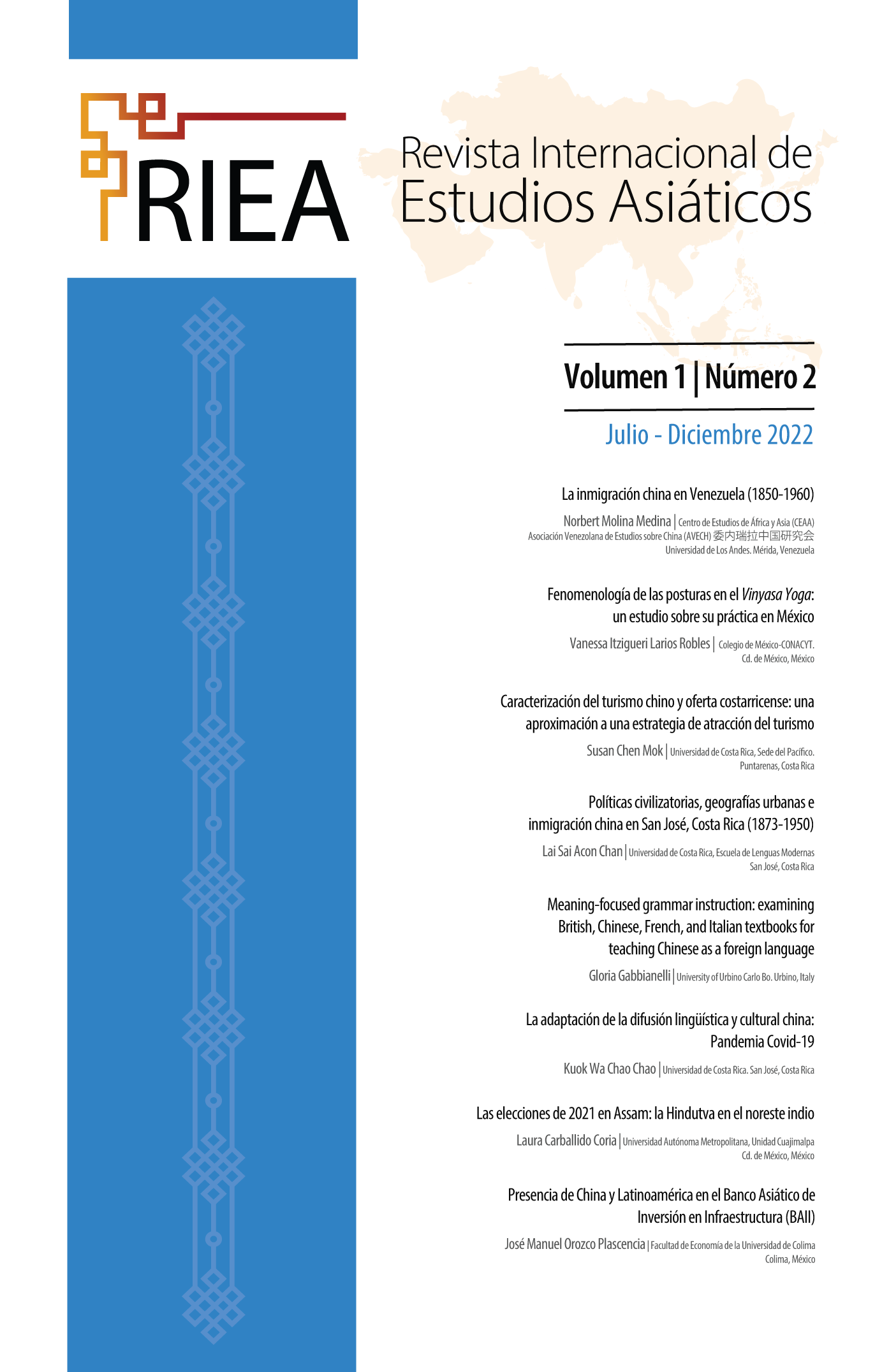Abstract
The purpose of this article is to explain the reception, development, and practice in Mexico of the postural yoga style called Vinyasa Yoga; as well as the characteristics that distinguish it from other styles of yoga. The Phenomenology of the body builds a bridge to think about the contemporary practice of yoga and offers a reinterpretation of postures (āsana). Through interviews with key figures in the establishment of Vinyasa in Mexico, the research addresses the fundamental role of modern and contemporary dancers for this style of yoga to proliferate in our country.
References
Csordas, Thomas. “Modos somáticos de la atención”, Cultu- ral Anthropology. Vol. 8, N°. 2 (1993): 135-15G.
D´Angelo, Ana. “Conciencia en la postura: del dualismo a la reflexividad en la práctica de Yoga”. Runa. Vol. 37.1. (201G). ISSN 1851-9G28 (en línea) / ISSN 0325-1217 (impresa).
De Michelis, Elizabeth. A History of Modern Yoga. Patañjali and Western Esotericism. London: Continuum, 2004.
– “Some Comments on the Contemporary Practice of Yoga in the UK, with Particular Reference to British Hatha Yoga Schools”. Journal of Contemporary Religion, Vol.10, num. 3, 1995.
Depraz, Natalie. “Fenomenología de la atención “after” Husserl”. Acta Fenomenológica Latinoamericana. Vol. IV. Círculo Latinoamericano de Fenomenología. Lima, Pontificia Universidad Católica de Chile: 21-40.
Desikachar. T. K. V. El corazón del yoga. Desarrollando una práctica personal. México, D.F.: Inner Traditions en español, 2003.
Dharma Mittra. Asana. 508 Yoga Poses. California: New World Library, 2003.
Flood, Gavin. El hinduismo. Madrid: Cambridge University Press, 1998. Iyengar, B.K.S. Light on Yoga. New Delhi: Harper Collins, 2007.
Jain, Andrea. Selling Yoga. From Counterculture to Pop Culture. [Edición Kindle] New York: Oxford University Press, 2015.
Jois, Pattabhi. Yoga Mala. The Seminal Treatise and Guide from the Living Master of Ashtanga Yoga. [Edición Kindle] New York: North Point Press, 2002.
Krishnamacharya, Tirumalai. Yoga-Makaranda. The Nectar of Yoga.
[Edición Kindle] Chennai: Media Garuda, 2013.
Merelau-Ponty, Maurice. Fenomenología de la Percepción. Barcelona: Península, 2000.
Morley, James. “Inspiration and Expiration: Yoga Practice through Merleau-Ponty´s phenomenology of the Body”. Philosophy East and West. Vol. 51, Num. 1. (2001)DOI: 10.1353/pew.2001.0013.
Muñoz, Adrián y Gabriel Martino. Historia Mínima del Yoga. Ciudad de México: El Colegio de México, 2019.
Muñoz, Adrián. Radiografía del hathayoga. Ciudad de México: El Colegio de México, 201G.
Patañjali. Yogasutra. Los aforismos del Yoga. Barcelona: Kairós, 201G. Rea, Shiva. “Consciousness in motion: Vinyasa”. Yoga Journal.
(noviembre, 2012): Recuperado de: https://www.yogajournal.com/
yoga-101/types-of-yoga/vinyasa-yoga/consciousness-in-motion/ Singleton, Mark. El Cuerpo del Yoga. Los orígenes de la práctica postural
moderna. Barcelona: Kairós, 2018.
– “Transnational Exchange and the Genesis of Modern Postural Yoga” en Hauser, B. (ed.), Yoga Traveling, Transcultural Research. Heidelberg Studies on Asia and Europe in a Global Context, DOI 10.1007/978- 3-319-00315-3_2. Springer International Publishing Switzerland. (2013):
Singleton, Mark y Borayin Larios. “The Scholar-Practitioner of Yoga in the Western Academy”. En Routledge Handbook of Yoga and Meditation Studies, editado por Suzanne Newcombe y Karen O’Brien-Kop.London: Routledge, 2021.

